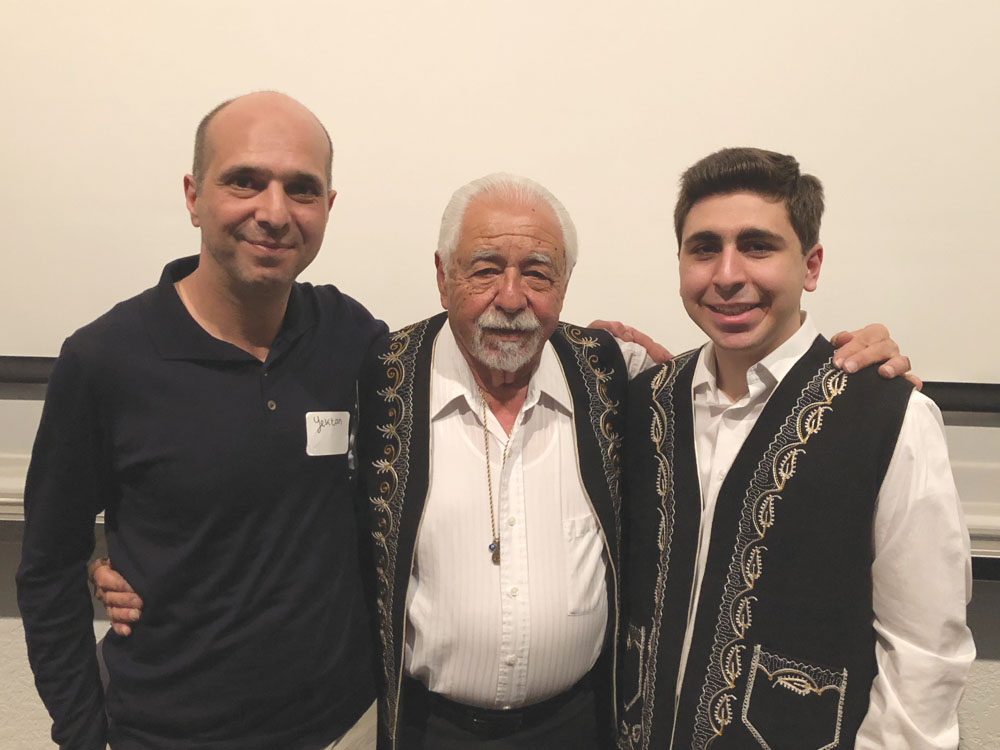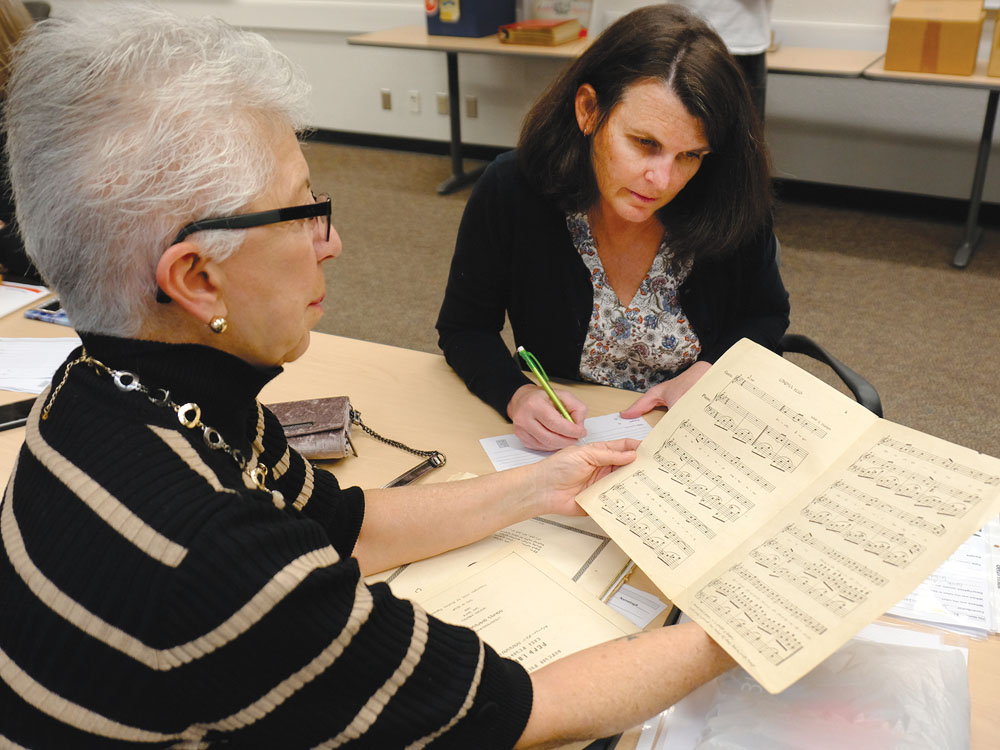
Photo: Barlow Der Mugrdechian
Carina Tokatian
Staff Writer
“You don’t necessarily think of traditional Armenian music in the United States as having such complex roots because we are so familiar with it—but it does. It is interesting to put a spotlight on these aspects of life that we are familiar with but may take for granted,” stated Malina Zakian, archivist for the Armenian Studies Program.
Whether it was sheet music, photographs, or records, a large variety of Armenian-American musical archives were collected on Saturday, February 29 during the “Armenian-American Musi-cal Heritage of the San Joaquin Valley” day organized by the Armenian Studies Program and held at Fresno State.
The “Musical Heritage” day began at 1:00PM with a scanning event followed by a musical concert and discussion at 3:30PM in the University Business Center.

Photo: Alain Ekmalian
The purpose of the scanning event was to encourage San Joaquin Valley Armenian community members to submit artifacts pertaining to Armenian music and heritage, especially items that date back to the early twentieth century in America. Between 100 to 125 photographs and musical scores were collected and digitized during the event. While items were being scanned, those who attended had the opportunity to tour the University Business Center lobby and view informational boards, sheet music, newspaper clippings, posters, and old photographs prepared by Van Der Mugrdechian. Meanwhile, they could listen to Armenian records play in the background.
This project, “Armenian-American Musical Heritage of the San Joaquin Valley,” was made possible with support from California Humanities, a nonprofit partner of the National Endowment for the Humanities. Visit www.calhum.org.
Armenian Studies Program Coordinator Prof. Barlow Der Mugrdechian has been collecting Armenian records donated by the community for more than thirty years. Two years ago, he and Zakian discussed plans on how to make the recordings available for researchers and the public. The Program successfully applied for a Grammy Museum Grant to inventory and catalog nearly 1,500 recordings on 78-rpm discs from the Armenian-American diaspora.
Since then, Zakian has been working on interpreting and cataloging these records with Dr. Yektan Türkyılmaz, whose main area of study is on the history of musical recordings in the Eastern Mediterranean region and its Diaspora. Through Dr. Türkyılmaz’s assistance, Zakian hopes they will be able to “curate and contextualize the collection” to make it more usable for the community. “Part of this process is to try to fill some of the gaps that might be in the historical record,” said Zakian. “We are trying to understand the role music has played in life here as a form of community expression.”
The University Business Center Auditorium was filled by the 3:30PM start of the concert and discussion. Dr. Yektan Türkyılmaz, who earned his doctorate in cultural anthropology from Duke University, was invited from Berlin, Germany, to moderate the discussion. Dr. Türkyılmaz interviewed internationally recognized oud master Richard Hagopian, asking him questions which gave an overview of the history of Armenian music in the San Joaquin Valley.
Hagopian shared his personal musical journey as well as recounting humorous anecdotes from throughout his life. His fascination with the oud, a Middle Eastern pear-shaped string instrument, motivated him at a young age to learn from oud masters such as Oudi Hrant Kenkulian and Oudi Garbis Bakirgian. Hagopian later formed the well-known “Kef Time Band,” which has performed throughout the United States.
Both Hagopian and Dr. Türkyılmaz discussed how many village songs were “creatively edited” upon their arrival in the United States. Sometimes, these edits could amount to ten different versions of a song based on each artist’s style. Another interesting point Hagopian highlighted was that sixty percent of Armenian songs were written with Turkish lyrics up until the 1960s. Armenian musicians would frequently borrow Turkish melodies and rewrite them with Armenian verses. These lyrics often re-flected the social conditions immigrants encountered in America. For instance, the song, “Sheg Mazerov er” (She had Blonde Hair), centers around the struggles of a musician searching for an Armenian wife in America.
Dr. Türkyılmaz conducted a guided conversation with Mr. Hagopian, revealing the rich history of Armenian music in the San Joaquin Valley. “Who were these early Armenian-American musicians?” asked Dr. Türkyılmaz, to which Mr. Hagopian responded with stories of his earliest recollections of the first musicians.
Though Hagopian indicated that many Armenian musicians settled on the East Coast, the Fresno Armenian community has still fostered its own set of bands and musicians with their own distinct styles of playing. Dr. Türkyılmaz emphasized how Fresno was “one of the most densely populated Armenian settlements in America.” Because of this rich history, many San Joaquin Valley residents like Hagopian developed their own stories about music and dancing events at Armenian coffeehouses and picnics.
Even if they may be a part of Armenians’ history, these events remain ongoing traditions as Hagopian proved at the end of the concert. Handing over his oud for his grandson Andrew to play and sing, he demonstrated that these songs have yet to bear more memories.
Through both digitized records and the continuation of live music, these archives and traditions will be preserved for the next generation to relish.
 Hye Sharzhoom Armenian Action
Hye Sharzhoom Armenian Action